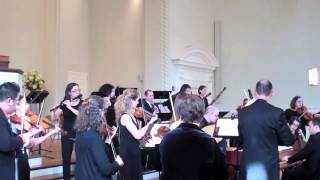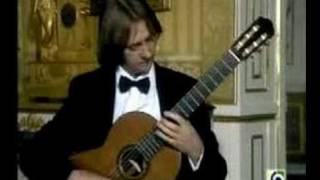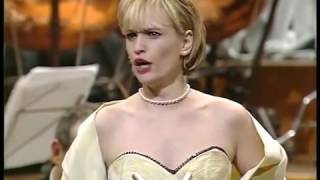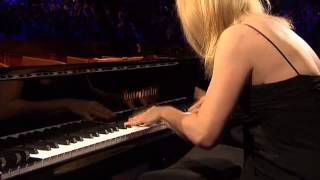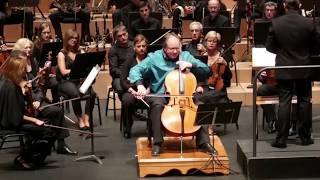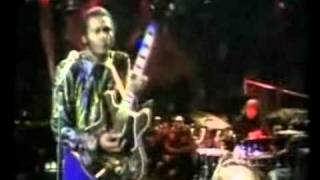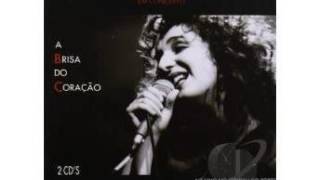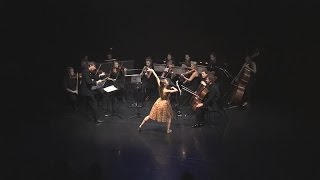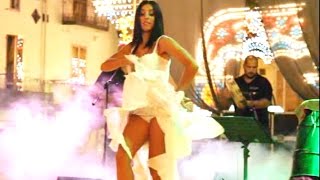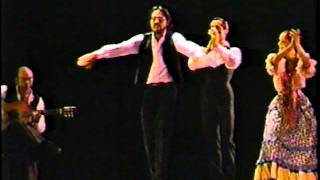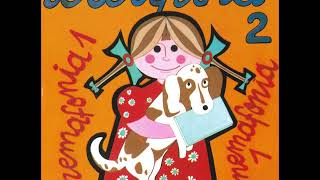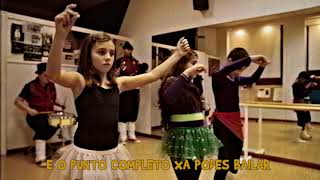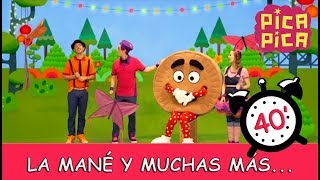Recommended music videos for initiation to classical music
William Boyce (1711–1779), English composer, was a chorister at St. Paul's Cathedral , before studying music with Maurice Greene after his voice was transformed. His first professional role came in 1734, when he took a job as organist at Oxford Chapel . He held many similar posts before being appointed Master of the King's Music in 1755, and eventually becoming organist at the Chapel Royal in 1758. Boyce is known for his set of eight symphonies, his anthems, and his odes. He also wrote the masque Peleus and Thetis , songs for John Dryden 's Secular Masque , incidental music to the plays of William Shakespeare , and a great deal of chamber music.
Symphony. The word is derived from the Latin symphonĭa, which in turn is derived from the Greek συμφωνία (symphōnía), meaning "consonance" as opposed to διαφωνία (diaphōnia), meaning "dissonance". In the Middle Ages , and later, the word symphony was used to describe several instruments, especially those capable of producing more than one sound simultaneously in the sense of "sounding together". The word begins to appear in the titles of some works by 16th and 17th century composers ; by the end of the 18th century the word had acquired the common meaning it receives today: a work generally consisting of several distinct sections or movements and usually scored for orchestra.
Today, with Tempesta di Mare (Philadelphia Chamber Orchestra), we present the First Movement of William Boyce 's Symphony No. 2 .
The Austrian composer Franz Joseph Haydn (1732-1809), whose brother Michael Haydn was also a notable composer, was one of the main pillars on which Classicism (1750-1820) was based. At the age of six, he began his musical studies on the harpsichord and violin; at the age of eight, he was admitted as a chorister at St. Stephen's Cathedral in Vienna , where he continued his studies in singing, piano, and violin. After his voice died, he had to survive by working multiple jobs while studying composition by analyzing the works of Carl Philipp Emanuel Bach . He maintained a close friendship with Mozart and was a teacher of Beethoven . He laid the main foundations of sonata form and the formal structure of the string quartet and the symphony. He died at the age of 77 in Vienna .
A string quartet is a musical ensemble of four string instruments, usually two violins, a viola, and a cello, or a piece written to be performed for such an ensemble. The string quartet is widely regarded as one of the most important forms of chamber music , given that many of the renowned composers from the 18th century onward wrote works for string quartet ; the composition is traditionally structured in four movements.
Structure . From Joseph Haydn, Mozart and Boccherini , the quartet became the most popular genre in the chamber music repertoire . The structure henceforth follows an almost unchanged four-movement model, which remains a reference, although it has been questioned on several occasions. Each of the four movements is subject to a given tempo and a particular musical form: FIRST MOVEMENT: Allegro tempo in sonata form . SECOND MOVEMENT: Adagio tempo, in song, sonata or theme and variations form. THIRD MOVEMENT: Allegretto tempo, in triple time, in minuet and trio form . Although Beethoven 's scherzo form was later used . FOURTH MOVEMENT: Presto tempo with rondo, rondo-sonata or a variety of rondo .
String Quartet The Lark, Op. 64. No. 53. Of the sixty-eight string quartets Joseph Haydn wrote, this is one of the most popular; its nickname derives from the first movement and its beautiful melody, which we offer today in a performance by the female Lark Quartet (1985-2019).
Agustín Barrios Mangoré (1885-1944), also known as Nitsuga Mangoré , was a Paraguayan classical guitarist and composer of Guaraní origin. He was born in San Juan Bautista de las Misiones on May 5, 1885. Also known by his nickname Mangoré , he is the most renowned classical guitarist and composer in Paraguay . He began playing guitar as a child, participating sporadically from the age of eight with the Barrios Orchestra , made up of members of his family. Gifted with great musical talent, he alternated the violin with the flute and the harp, although later he chose the guitar as his main instrument. Until the age of thirteen, Agustín played in the Barrios Orchestra and one day in 1898, after a concert, he was approached by Gustavo Sosa Escalada who took him on as a student at the Ateneo Paraguayof (then called Institut Paraguaià ), where he was formally introduced. Barrios went on to study the best-known works of the most important classical guitar composers up to that time, such as Francisco Tárrega, José Viñas Díaz, Fernando Sor, Dionisio Aguado, Julián Arcas and Joaquín Parga . He continued his musical and academic education at the Colegio Nacional in the Capital, where his instructor was Nicolino Pellegrini , and where, in addition to music, he studied mathematics, journalism and literature.
His compositions are based on songs and dances from all over Latin America , including cueca, choro, estilo, maxixa, milonga, arqueta, tango, zamba, zapateado, Paraguayan polka , etc. Most of his works can be considered late Romantic in nature, despite having lived musically in the first half of the 20th century . He composed preludes, studies, waltzes, mazurkas, tarantellas and romances . His creativity allowed him to compose more than three hundred pieces for guitar.
The origin of the guitar dates back to 1000 BC, where the Assyrians already had plucked string instruments with a sound box; on the other hand, there are theories that claim that the guitar arrived in the Peninsula from the Roman Empire , while other theories claim that its arrival came from the Arabs . In the 14th century , the vihuela with six double strings and the guitar with four already coexisted; in the 17th century the guitar already had five strings and was known as the Spanish guitar ; in the 18th century , Jacob Otto introduced the six-string guitar and the current tuning was established. In the 19th century , the figure of Francisco Tárrega (1852-1909) was essential for the definitive promotion of the guitar and the technique to be used. The Spanish luthier José Ramírez III, together with the guitarist Narciso Yepes , added four more strings on the bass, on a wide neck with multiple frets allowing to significantly expand the range of sounds of the left hand.
Today we offer Waltz No. 3 for guitar by Agustin Barrios Mangoré performed by Scottish guitarist David Russell.
Pablo Sorozábal (1897-1988) was born in Donostia/San Sebastián , according to his own memoirs, “into a proletarian, Basque-speaking family”. He began his violin studies at the San Sebastián Municipal Academy of Music ; at 17, he joined the San Sebastián Casino Orchestra, and at 21, the Madrid Philharmonic Orchestra . With a scholarship from the Gipuzkoa Provincial Council, he completed his studies in Leipzig and Berlin . Due to his republican ideas, after the Civil War , he was isolated as a composer, which made it difficult for him to premiere the various zarzuelas he composed in Madrid . His tenure as director of the Madrid Symphony Orchestra ended on bad terms in 1952 when he was forbidden to play Shostakovich 's Leningrad Symphony , an event that led to his resignation.
La del manojo de rosas is a zarzuela, classified as a lyrical sainete, in two acts with lyrics by Anselmo C. Carreño and Francisco Ramos de Castro , and music by the maestro Pablo Sorozábal , premiered with great success at the Fuencarral Theater on November 13, 1934. In this zarzuela he knew how to reflect the atmosphere of Madrid at the time of its premiere, wisely combining traditional sainete rhythms, such as the pasodoble, the mazurka or the chotis , with others such as the fox trot or the farruca , giving them a new character and a certain danceable sense. As is usual in many works of the genre, the sentimental plot predominates; but certain touches of social awareness can be appreciated in the atmosphere of that time.
Today we can witness it with the Guipuzcoan soprano Ainhoa Arteta in the Romanza de Ascensión.
Recommended classical music videos
Johann Sebastian Bach (1685-1750) Today we meet one of the three giants of Western music along with Mozart and Beethoven . He was a German violinist, organist, conductor and composer, born in Eisenach into the most prominent musical family in history. In 1703 he got his first job in Arndstat and in 1707 he moved to Mülhausen as an organist, where he married his cousin Maria Barbara with whom he had seven children. After the death of his wife in 1720, after a year and a half of widowhood, he remarried Maria Magdalena with the who would have another thirteen children. In 1723 he moved to Leipzig where he would reside until his death at the age of 65. His influence has been notable on Haydn , Mozart , Beethoven , Mendelssohn , Schumann , Chopin ... and many other renowned composers.
The Catalogue of Bach's Works, or Bach-Werke-Verzeichnis , better known by its acronym BWV , consists of a numbered index of all the composer's works, arranged thematically by type of work, genre, and vocal or instrumental nature. It is used by scholars and musicians worldwide. The catalogue was created in 1950 by the German musicologist Wolfgang Schmieder .
The accordion is a harmonic wind musical instrument consisting of a bellows, a tuning fork, and two wooden sound boxes. The bellows are closed at both ends by the wooden boxes. The right-hand side of the accordion also has a fingerboard with a key arrangement that can be piano-like ( piano accordion ) or round keys (also called buttons ); the left-hand side has buttons on both types of accordion for playing bass and accompaniment chords.
The Harpsichord Concerto in D minor, BWV 1052 , is a Baroque concerto for harpsichord and string orchestra by Johann Sebastian Bach . It is considered one of his greatest concertos; in the words of Jones (2013) it "conveys a sense of enormous elemental power". This atmosphere is created in the opening sections of the two outer movements; both begin in the manner of Vivaldi , with unison writing in the ritornello sections, and both are in ABA′ form. It consists of three movements: I (0'12") ALEGRO.-. II (8'28") ADAGIO.-. III (14'39") ALLEGRO and is the earliest of Bach 's harpsichord concertos (BWV 1052–1065). In the first movement , the middle section is in the keys of D minor and E minor ; while in the last movement , the keys are D minor and A minor ; the changes between the two keys are sudden and pronounced. In both B sections , Bach adds unexpected features: in the first movement , what should be the last ritornello is interrupted by a brief episode leading into the actual final ritornello ; similarly, in the last movement , after a few bars of orchestral ritornello marking the beginning of the A′ section , thematic material from the harpsichord (accordion in our case) introduces a freely developed, highly virtuosic episode culminating in a fermata (for an improvised cadenza ) before the final ritornello . The slow movement , is built on a foundation that is played by the full orchestra and the accordion in the opening ritornello. It continues throughout the entire piece, providing the groundwork on which the accordion weaves a florid and ornate melodic line.
Today we offer a jazz version arranged by British maestro Callum Au with the accordion as soloist led by Latvian accordionist Sidorova Ksenija accompanied by the Latvian Radio Big Band .
Ludwig van Beethoven (1770-1827) along with Bach and Mozart is part of the trio of giants of Western music. Born in Bonn , his father of Flemish origin tried to make him a second Mozart , although it was a notable failure. Despite this, from the age of nine the organist Christian Gottlob Neefe captivated him with the study of Bach . In 1787 he moved to Vienna with the intention of receiving Mozart lessons, but the death of his mother returned him to Bonn a few days later. And so after five years, he returned to Vienna where he contacted Haydn and Salieri , becoming known as a composer and pianist with notable public recognition. However, his profession as a pianist could not be pursued due to the deafness that attacked him the following year, leaving him totally incapacitated in this faculty.
The catalog of Beethoven's works . There are 138 musical works composed by Beethoven , arranged by numbers known as opus ("work" in Latin) or its abbreviation op. , assigned by the composer's publishers during his lifetime. In addition, there are another 205 works that do not have opus numbers and were published after the composer's death. These works were assigned WoO numbers (Werke ohne Opuszahl, "works without opus numbers"). This catalog was first compiled by Georg Kinsky and Hans Halm (Das Werk Beethovens) in 1955.
The Sonata was originally a composition written to be played or "sounded" by one or more musical instruments, just as the cantata was to be "sung" by one or more voices. From the Classical period (1750-1810) onwards, its definition became more stable, applying to a composition for one or two instruments and generally consisting of three movements (fast-slow-fast) and sometimes four, with or without a short introduction. It should not be confused with sonata form , which is a compositional model consisting of three uninterrupted sections: a) exposition, b) development, c) re-exposition. Sonata form is normally applied to the first movements of sonatas, quartets, symphonies and concertos .
Beethoven 's Sonata No. 14 Op. 27 No. 2, popularly known as "Moonlight" , is one of his most famous works. It was composed in 1801 and consists of the following three movements: I (0:02) ADAGIO SOSTENUTO. It is written in a similar way to the ternary lied form and many see it as having similar characteristics to the sonata form . A melody that Hector Berlioz called a "lament" is played almost entirely in the right hand. II (5:21) ALLEGRETTO. It is a minuet of a rather peaceful and uneventful character, an element that contrasts with the following movement. III (7:54) PRESTO AGITATO. It represents an experiment by Beethoven and is written in sonata form . The movement consists of rapid arpeggios, scales and a skillful question and answer game between the two hands. Its difficulty is very high and contrasts with that of the two previous movements.
Today we offer it to Valentina Lisitsa (1973), a Ukrainian pianist who has lived in the USA since 1991 and is currently the most viewed classical concert pianist on the Internet.
Johannes Brahms (1833-1897) born in Vienna where he spent most of his life, was the most conservative composer of the Romantic movement compared to the progressive movement led by Liszt and Wagner . His music is firmly rooted in the structures and composition techniques of the classical masters and its formal structures faithfully follow the patterns of Classicism, although he uses some of the color of Romanticism and popular music. Of an eminently perfectionist character, he wrote for piano, chamber ensembles, symphony orchestra, for solo voices and for choir. It was Hans von Bulow who proposed the "three B's" referring to Bach , Beethoven and Brahms as the three main pillars of the History of music .
Symphony. The word symphony is derived from the Latin symphonĭa, which in turn is derived from the Greek συμφωνία (symphōnía), meaning "consonance" as opposed to διαφωνία (diaphōnia), meaning "dissonance". In the Middle Ages , and later, the word symphony was used to describe several instruments, especially those capable of producing more than one sound simultaneously in the sense of "sounding together". The word begins to appear in the titles of some works by 16th and 17th century composers ; by the end of the 18th century the word had acquired the common meaning it receives today: a work generally consisting of several distinct sections or movements and usually scored for orchestra.
The symphony since Romanticism . Beethoven 's symphonies usually had a first movement "Allegro" in sonata form (exposition of two or more contrasting themes, development and reexposition with or without coda ), a slow second movement (sometimes in the form of a theme and variations ), a third movement in triple rhythm (usually a scherzo ; although before Beethoven a minuet and trio were common ), ending with a fast fourth movement (generally in the form of a rondo ); although there are symphonies with a last movement also written in sonata form .
Brahms's First Symphony , whose sketches date from 1854, took at least fourteen years to complete. The premiere was conducted by Brahms 's friend Felix Otto Dessoff and took place on 4 November 1876 in Karlsruhe, Germany . The work is structured in four movements: I (0.25") UN POCO SOSTENUTO – ALLEGRO – MENO ALLEGRO (C minor) II (18.42") ANDANTE SOSTENUTO (E major) III (28.28") UN POCO ALLEGRETTO E GRAZIOSO (A flat major) IV (33.48") ADAGIO – PIÙ ANDANTE – ALLEGRO NON TROPPO, MA CON BRIO – PIÙ ALLEGRO (C major).
Today we can see it performed by the Frankfurt Radio Symphony Orchestra conducted by the Polish maestro Stanisław Skrowaczewski .
Joseba Torre Alonso ( Bilbao in 1968) studied music at the JC de Arriaga Conservatory of Music in Bilbao and at the Conservatory of Music in Zaragoza . He continued his training at the National Conservatory of Music in Paris , where he unanimously won First Prize . He has won First Prizes in national and international competitions and was selected by the International Music Society to represent Spain in 1996-97-98. He was a founding member and president of the Basque-Navarrese Composers Association and currently combines his work in composition and conducting with teaching at Musikene, the Basque Country Music Centre .
The cello (often abbreviated as cello) is a bowed string musical instrument belonging to the violin family. Within this family, due to its size and register, the cello occupies a place between the violas and the double basses. It is one of the basic and fundamental instruments of the orchestra within the group of strings, normally playing the low parts, although its versatility also allows its players to play melodic parts. The cellist plays his instrument sitting on a chair or stool, holding it between his legs (resting it on the floor by means of a metal stem called a pica, strut, tenon or pivot) and rubbing the strings with a bow. The strings are named according to their tuning: the first string (counting from highest to lowest, and from right to left in the image) is A , the second string is D , the third string is G and the fourth string is C; like the viola, but in a lower octave.
Joseba Torre's "Kantuz" is not a concert work per se; a more apt description would be that of an elegiac concertante piece , full of tenderness and spirituality. The cello is the voice that narrates the composition, just as Strauss did with Don Quixote or Bloch with Schelomo . The highly expressive color is accentuated by the soloist's regular connections to Arabic scales and contours. The cello must be heard in all its registers, including passages of extremely high notes. The orchestration is quite extensive, but always unobtrusive: when they accompany the solo cello, they act as tonal support, but almost inevitably take a backseat to the melodic cells. However, there are also many moments in which the solo cello is alone, unaccompanied, and others in which the orchestra plays alone, without a soloist, which could perhaps be likened to the traditional " tutti " of orchestration. ( Comment extracted from the video footer )
Recommended music videos for all tastes
Chuck Berry (1926–2017) was an American singer-songwriter, guitarist, and singer-songwriter, one of the most renowned creators and performers of rock and roll . He is indeed considered one of the most influential musicians in the history of rock and roll , being one of the pioneers of this musical genre. Rolling Stone magazine considers him the 5th best musical artist of all time after The Beatles, Bob Dylan, Elvis Presley , and The Rolling Stones . For his legacy to the rock genre , he won the 2014 Polar Prize , considered the "Nobel Prize of music." Guitarist and music critic Cub Koda wrote: "Of all the pioneers of rock and roll , none is more important as a composer for the development of music than Chuck Berry ."
Dulce Pontes (1969) is a Portuguese fado singer and composer; she is considered a world music artist . Her artistic activity contributed to the fado revival of the 1990s. Pontes is distinguished by her versatile, dramatic voice and emotional warmth; some of the songs in her repertoire are her own compositions. In 1991 she won the RTP Song Festival and represented Portugal in the Eurovision Song Contest ; that same year she participated in the OTI Festival , held in Acapulco . Throughout her career she has performed alongside artists such as Ennio Morricone, Giorgos Dalaras, Andrea Bocelli and José Carreras.
The Weeknd , real name Abel Makkonen Tesfaye ( Scarborough, Toronto, Ontario , February 16, 1990) is a Canadian singer, songwriter, record producer and actor, known for his sonic versatility and dark lyricism; his music explores escapism, romance and melancholy, and is often inspired by personal experiences. He has received numerous accolades, including four Grammy Awards , 20 Billboard Music Awards , 17 Juno Awards , six American Music Awards , two MTV Video Music Awards and nominations for an Academy Award and a Primetime Emmy Award .
Born and raised in Toronto , Tesfaye began his career in 2009, at the age of 19, releasing music anonymously on YouTube . Two years later, he co-founded the record label XO and released the mixtapes House of Balloons, Thursday, and Echoes of Silence , which gained recognition for their contemporary and alternative R&B style and the mystique surrounding their identity. In 2012, he signed with Republic Records and re-released the mixtapes on the compilation album Trilogy . He explored dark wave on his debut studio album Kiss Land (2013), which debuted at number two on the US Billboard 200. Following its release, Tesfaye began contributing to film soundtracks, with his critically acclaimed single " Earned It " from Fifty Shades of Grey (2015) winning the Grammy Award for Best R&B Performance, while also receiving an Academy Award nomination for Best Original Song .
Among the world's best-selling music artists with over 75 million records sold, Tesfaye holds multiple streaming and Billboard chart records. He is the first artist to simultaneously debut in the top three of the Hot R&B/Hip-Hop Songs chart, while "Blinding Lights " is ranked as the highest-charting Hot 100 song in Billboard history. Often regarded as a prominent figure in contemporary popular music, Tesfaye was listed by Time as one of the most influential people in the world in 2020. An advocate for racial equality and food security, he was named a World Food Programme Goodwill Ambassador in 2021.
Regine Velasquez , full name Regina Encarnación Velasquez and Ansong de Alcasid (Bulacan, April 22, 1970), is a Filipino singer and actress, nicknamed " The Songbird of Asia ". Renowned for her vocal texture and technical ability, she is widely considered one of the best voices in her country, quite a celebrity in Asia . She became known after winning the television talent show " Ang Bagong Kampeon " in 1984 and the Asia Pacific Singing Competition in 1989. She has released seventeen studio albums, eight soundtrack albums, one live album, fifteen compilation albums, five EPs, ninety-three singles and twenty-three promotional singles. With over ten million records sold, Velasquez is the best-selling Filipino recording artist of all time. Velasquez has also appeared on television shows such as Forever in My Heart (2004), Ako si Kim Samsoon (2008), Totoy Bato (2009), Diva (2010), I Heart You , Pare! (2011), and Pobre Señorita (2016). She was a judge on StarStruck (2015) and Idol Philippines (2019).
Recommended peculiar videos
Aaron Copland (1900-1990) was an American classical and film composer of Russian-Jewish origin. His work is influenced by Impressionism and especially by Igor Stravinsky . Along with George Gershwin, he stood out as one of the most important composers of the musical identity of the United States in the 20th century . In the fall of 1917, he began studies in harmony and counterpoint with Rubin Goldmark . At his suggestion, he studied piano first with Victor Wittgenstein and from 1919 with the famous pedagogue Clarence Adler . In June 1921, he moved to France to study with Nadia Boulanger . In 1924 he returned to the USA and the following year he was the first composer to receive a Guggenheim Fellowship , which he renewed in 1926.
In 1945 he received the Pulitzer Prize for music and the New York Music Critics Award for his ballet Appalachian Spring , which is presented today by dancer Nancy Osbaldeston accompanied by the Constella Ballet & Orchestra .
Pizzica di Santu Paulu (traditional from Salento, southern Apulia ) The video was filmed at a live performance in the town of Calitri (province of Avellino , region of Naples ) during the celebration of San Vito on September 7, 2012. This song is inspired by the myth of TARANTA , a music that has been played in southern Apulia and all over southern Italy for almost 3,000 years. Taranta (Tarantella) is still used for healing purposes, to free the so-called tarantate (possessed women) and to obtain the universal energy (Reiki) that the Tarantella rhythm lets flow through people's minds, hearts and souls to the beat of the tambourine. Saint Paul , who stopped in southern Apulia on his way to Rome , blessed a drink of water at Galatina in southern Apulia (the famous "tarantate well") saying that possessed women were freed from the spider's poison by drinking that water... a ritual repeated for thousands of years by dancing this particular Tarantella which comes from the rituals of the ancient God Dionysus depicting the ancient Greek myth of TARANTA . Briganti di Terra d'Otranto dancer: Emanuela Vergari. (Commentary extracted from the foot of the video)
The bulerías (from the word "bullería" and this from "bulla": 'shouting and noise', or from "burlería": 'mockery') are the most typical flamenco style of Jerez de la Frontera (Cádiz, Andalusia), which have their origin in the courtyard festivals of the late 19th century and are distinguished by their fast, doubled rhythm in 6/8 and 3/4 time, which admits better than any other style shouts of joy and expressive voices of jaleo. They are usually the dance that ends any flamenco party (where forming a semicircle and one by one, the performers come out to dance a part of the musical piece).
Chinese martial arts . Over the centuries, hundreds of fighting styles have developed in China , each with its own martial arts schools featuring physical exercises inspired by the movements of certain animals or ancient Chinese beliefs. Their origin dates back more than 4,000 years as a means of self-defense against attacks from other peoples, for which hand-to-hand combat was inevitable and military training indispensable.
Today, transformed into an amazing artistic spectacle, we can see the movements of thousands of young people with millimetric precision and synchronization, young people from Henan Shaolin Tagou Martial Arts School , the largest Kung Fu school in the world, located in the province of Henan , in the area of the Songshan Shaolin temple.
Recommended music videos for children
Various Wikipedia articles and relevant information on Artificial Intelligence were used to prepare these texts.
The texts of Videomusicalis are written in Basque, Spanish and English.





